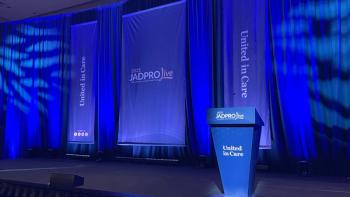
- May 2018
- Volume 12
- Issue 4
Bioimpedance Spectroscopy Can Help Prevent Clinical Lymphedema
Several breast cancer treatment programs are reporting substantially less clinical lymphedema, particularly among patients at high risk after axillary dissection, radiation, or taxane-based chemotherapy, crediting their use of preclinical detection using bioimpedance spectroscopy (BIS).
Breast cancer-related lymphedema affects 3 million to 5 million people in the United States, and approximately 23,000 new cases are expected this year. On top of the daily harm to quality of life, lymphedema can prevent a patient from successfully moving on from cancer treatment. Then there is the economic effect: A recent analysis of commercial payers found that within 2 years of treatment, a diagnosis of lymphedema adds $14,600 to the average cost of treatment for a patient with breast cancer.1
But now, several breast cancer treatment programs are reporting substantially less clinical lymphedema, particularly among patients at high risk after axillary dissection, radiation, or taxane-based chemotherapy. Employing preclinical detection using bioimpedance spectroscopy (BIS), these centers report progression to clinical lymphedema in fewer than 10% of these high-risk patients. How is such a significant reduction possible? The answer lies in 2 of the main principles of breast cancer treatment: early detection and tailored intervention.
Compelling evidence that preemptive treatment can prevent progression to lymphedema comes from a prospective randomized trial reported in BMJ in 2010. Patients (n = 110) received either regular, preemptive, decongestive physiotherapy or conventional patient education and were followed for 1 year after axillary dissection.
In the education group, 25% of patients developed lymphedema. In the prevention group, lymphedema occurred in 7% (P = .01). Although the trial provides level 1 evidence that lymphedema can be prevented with preemptive treatment, most clinicians believe preventive decongestive physiotherapy treatment for all patients at risk of lymphedema is impractical, cost prohibitive, and unacceptable to patients. On the other hand, targeted intervention found to significantly increase the limb extracellular- to-intracellular fluid ratio—when simple OTC sleeve compression is effective— appears practical, cost effective, and acceptable to patients.
Estimating cost and savings with such an approach suggests potentially substantial cost-effective results. Assuming the cost per BIS test is $125 (based on 2017 Medicare payment), 2 years of tests (every 3 months) for 100 patients would cost $100,000. Using the results from the randomized prevention trial, 7 of 100 axillary dissection patients monitored with BIS plus targeted simple intervention would develop clinical lymphedema at an added healthcare cost of $102,200 ($14,600 added cost from lymphedema over 2 years × 7 patients).
For patients not monitored this way, the added cost would be $365,000 for the 25 patients expected to develop clinical lymphedema, yielding potential gross savings of $262,800 and net savings of $160,800 (subtracting $100,000 for BIS tests and estimating $2000 for sleeves). Applying an estimated savings of $160,000 per 100 patients to the group of approximately 40,000 US patients expected to develop lymphedema over 2 years yields potential savings of $64 million over 2 years. Considering that most experts accept a cost of $50,000 to $100,000 per quality-adjusted life-year (QALY), preclinical (stage 0) detection of lymphedema with effective simple intervention represents a rare opportunity to reduce healthcare costs and add QALYs at the same time.
References
- Caudle AS, Hunt KK, Tucker SL, et al. American College of Surgeons Oncology Group (ACOSOG) Z0011: impact on surgeon practice patterns. Ann Surg Oncol. 2012;19(10):3144-3151. doi: 10.1245/s10434-012-2531-z.
- Cheville A. Prevention of lymphedema after axillary surgery for breast cancer. BMJ. 2010;340:b5235. doi: 10.1136/bmj.b5235.
Articles in this issue
over 7 years ago
AKT Inhibitor May Overcome Chemotherapy Resistance in TNBCover 7 years ago
Benefits of Yoga and Meditation for Patients With Cancerover 7 years ago
Novel Combo Explored for Rare Brain Tumorover 7 years ago
Is It OK for an Oncology Nurse to Attend a Patient's Funeral?over 7 years ago
How to Advise Patients About Direct-to-Consumer Genetic Testingover 7 years ago
The Day Plannerover 7 years ago
Battling Bedbugs in the Infusion Centerover 7 years ago
An Ounce of Prevention: Cancer PrehabilitationNewsletter
Knowledge is power. Don’t miss the most recent breakthroughs in cancer care.
















































































